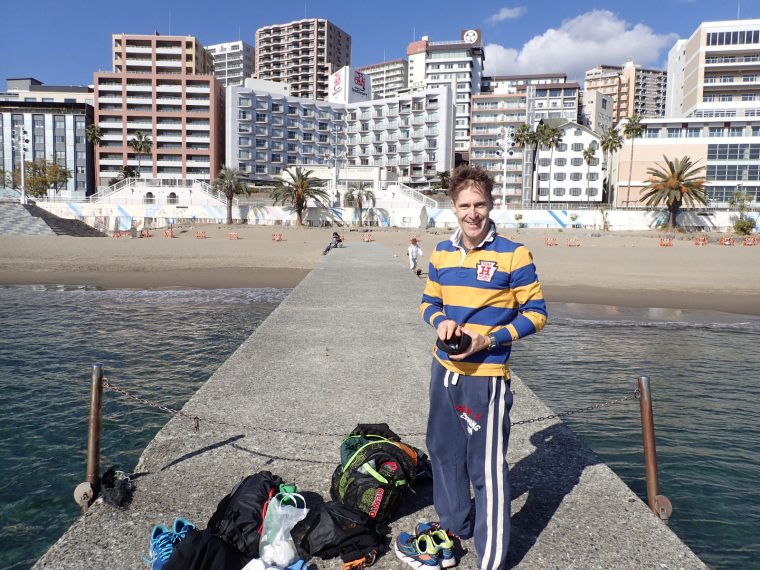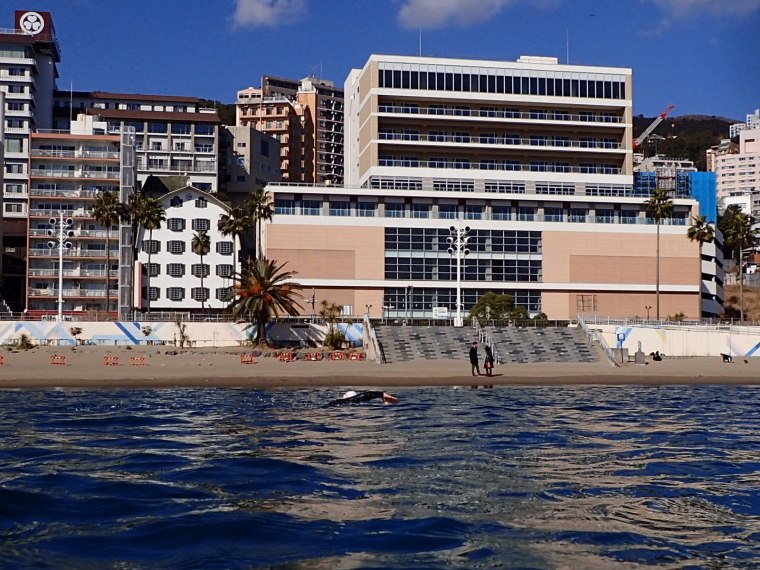
We had our inaugural swimrun meetup in Hayama in preparation for Japan’s first swimrun race in Kaiyo, Tokushima. Umi and Hanae of Team Sunflower gave us an excellent introduction to the weird and wonderful world of swimrun and its rather peculiar rules, tactics, and equipment. The rules seemed fairly straightforward. The aim is to get from A to B through water and over land, via a number of checkpoints. All races are done in teams of two members who must stay within 10 metres of each other for the entire race. In a typical event, you might swim ten times and run ten times, which means 20 transitions from land to sea, or sea to land. A swim leg can be a few metres or several hundred. A run leg may be along the rocks, or up and down a hill. You wear the same gear for the whole race, so you swim in shoes and run in a wetsuit. To compensate for having to swim in shoes, you are permitted to use swim paddles. You can also use a pull buoy to give buoyancy to your legs. As there are no aid stations, you must carry water and any food you need. You must also carry various safety items, such as a flotation device, first aid kit, map, and whistle. And if this weren’t enough to confuse you, your partner is tied to you with a bungee cord.
From top right (clockwise): GurneyGoo anti-chafing cream; Itoi hemp compression socks; Salomon Hydrapak water bottle; full equipment set; Strokemakers swim paddles; SealLine dry bag; Restube CO2 inflated flotation device
Umi & Hanae explaining the basics
Umi and Hanae explained that tactics depend a lot on individual preferences. A big question is whether to swim in your shoes, which slows you down, or take them off and carry them somehow on each swim leg (which slows you down). Umi removes her shoes, Hanae keeps hers on. Likewise with swim paddles, some people run with them in their hands, others stuff them up their wetsuit. Courses are marked, but you can actually take any route to get to a checkpoint; this means map reading is important. Part way through Umi and Hanae’s explanation, I realised there is a lot more to this sport than doing a spot of swimming and running.
We also got some tips for swimming and running in the same shoes. Inevitably, running in wet shoes causes chafing, so we were recommended to lather feet in GurneyGoo, a wonder cream from New Zealand. We also had some great advice about preventing your shoes sinking in the swim. Swimrun wetsuits usually come with arms and legs, but serious swimrunners cut off the legs above the knee, and then use the cut part as buoyant calf sleeves. However, these tend to slide off during the race, so Umi recommended wearing compression socks, such as Itoi’s 5-toe hemp-fibre socks over the top of the sleeves.Finally they showed us the Restube flotation device they use, which is kept in a small waist belt and inflated automatically by a CO2 canister.
We then got to put all our new-found knowledge to the test in the tranquil waters of Ohama Bay. We decided to swim out to the big rock in the middle of the bay, climb over it, and swim on to Chojagaski. We would then run over to the seaward side of the islet, run around its northern edge, and swim back to Ohama beach.
Heading out to the rock
The Rock
We entered the water as a group, but within moments my partner was 20 metres ahead; instant disqualification! I can see why we need to be joined by a bungee cord. We got to the rock, climbed out, and then jumped and dived in for the next leg. A smile was already spreading on my submerged face. At Chojagasaki we exited the water and ran around its rocks and shells, and then reentered for the last leg back to Ohama. It was so fun we did it all again.
Chojagasaki
Everyone talked over lunch about the gear they would buy and the tactics they would employ. It seems that a new swimrun group has formed.
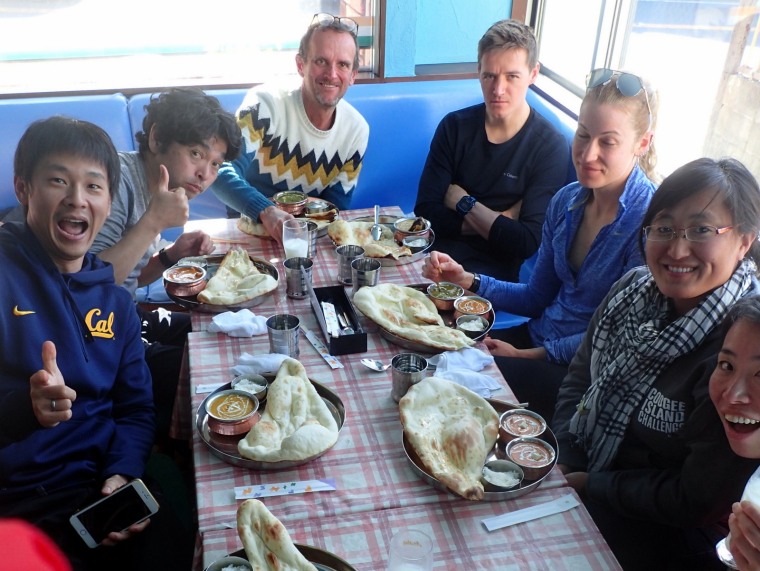 Lunch at the New Chandani
Lunch at the New Chandani










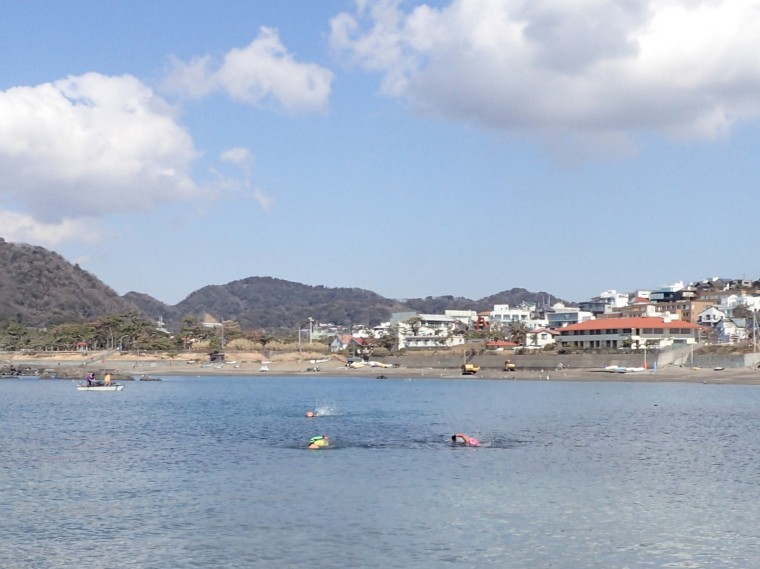










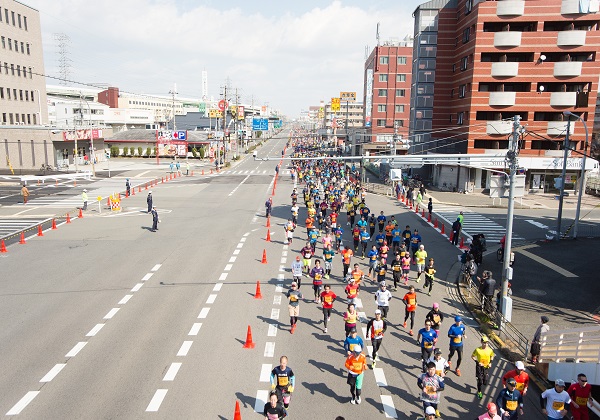


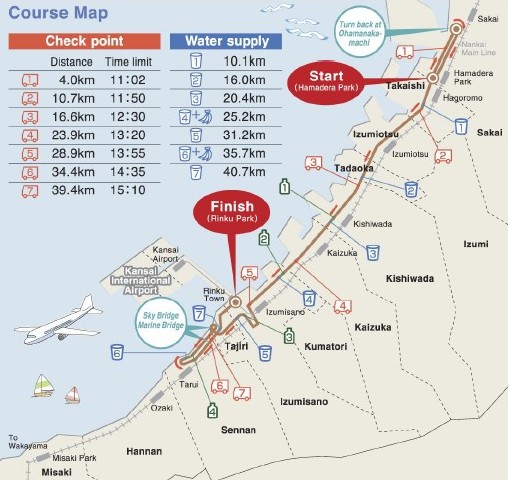

 Atami Bay
Atami Bay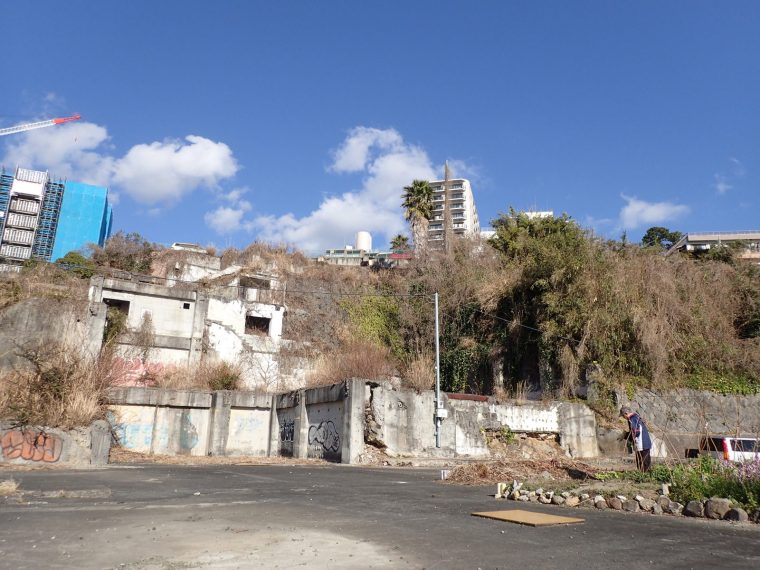 Guerrilla gardening on the crumbling beach front
Guerrilla gardening on the crumbling beach front